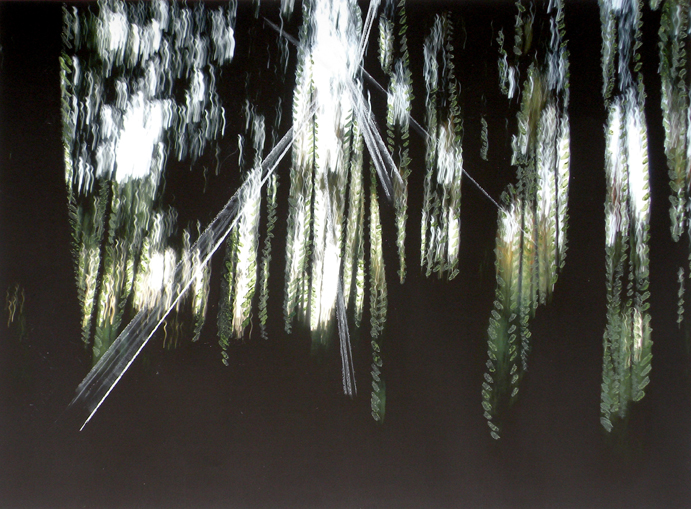‘Liminal Lights Series II’ is a recent collaborative a/r/tographic inquiry that began with a contemporary art practice of walking. Over the course of a year, Rita L. Irwin and Valerie Triggs each walked alone or with respective companions on the shaded paths of Pacific Spirit Regional Park, over 700 hectares of forest that encompasses the University of British Columbia campus. Their walking art was an inquiry into how continuous successions of evaluative repositionings feel a sense of onflow in making use of a qualitative earth to be generative of reality.
Rita created a series of images called Liminal Lights. Using her camera, Rita allowed her breath to move the image, documenting a ‘breath in movement’, a measure of the event of perception with the aesthetic experience of her walking body. Valerie resituated her walking art by working into and on top of Rita’s images, extending inquiry into the ways walking art sensitizes bodies to the potential inventiveness in perception’s pre-conscious evaluative demands that repeatedly integrate bodies back into the world. The reworked images were an inquiry into the ongoing of overlapping immersive practices of artmaking, researching and teaching and the ways in which the living of practices draws and remixes from multi-sensed pasts in feelings of the relational aliveness of the morphogenetic capacities in everyday moments.
This work is a/r/tographical because of its inquiry into research and pedagogical practice through art practices. Rita and Valerie’s collaborative event sought the making of new knowledge through the tensional forces embraced in immersive creative practices, rather than relying solely on attempts to bridge perceived disconnects between making internal sense of exterior realities.
New insights for research and pedagogy are generated in practice-based repositionings. A/r/tography is infused with the understanding that the potential generated in one creative practice affects and influences other creative practices. Its engagements remind educational practices and methodologies of their inability of being exhausted by human designed classification, evaluation or context, as well as of the complex embeddedness of practices in relation with other vitalities and becomings.



